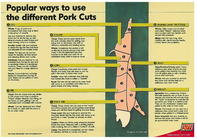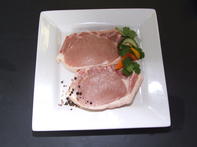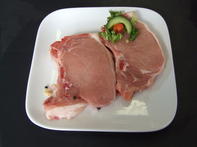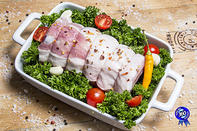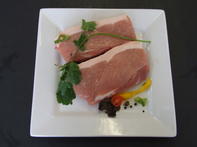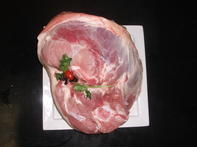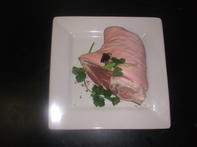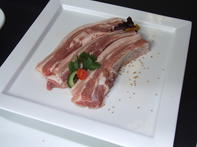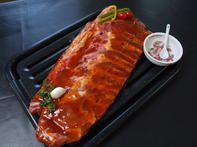
The Versatility of Pork Meat
Pig Farming in South Africa
The South African Pork Industry’s focus on the production of leaner meat has resulted in South African pork having lower fat than pork from many other countries.
Besides this, South African pork is a nutrient dense food, rich in essential amino acids, vitamins and minerals, with low amounts of cholesterol and saturated fatty acids. The South African Pork Producers Organisation (SAPPO) in The Complete Guide to South African Pork lists the following as popular pork cuts.
Thick Rib Chops
Thick rib chops are cut close to the neck end of the carcass and, according to The Complete Guide to South African Pork, are the juiciest, most tender chops you will find. It is ideal for grilling or pan frying. The thick rib may also be cut into cubes for kebabs, stir-fries, curries or stews.
Alternatively, the shoulder blade can be removed, tied or put in a mesh pocket for a delectable oven roast, or the shoulder cushion may be cut from the large muscle of the shoulder. The cushion is a boneless lean cut with good flavour, best for oven roasting.
Rib
The rib can be deboned and rolled or left with the bone in for an oven roast or cut into chops that are ideal for pan frying, barbeques or grilling, with or without marinade or a basting sauce.
Loin
The loin may be used as an oven roast with the bone in or boneless, with the roast being called a saddle if the loin is not split into two pieces. The loin may also be cut into tender and tasty chops, which can be fried, barbequed or grilled, with or without marinade or a basting sauce.
Chump
Chump can be deboned or enjoyed whole on the leg as a big oven roast. The chump may also be cut into chops, which are like the rump steaks of the pork carcass, according to The Complete Guide to South African Pork. The chops can be grilled, pan-fried or barbequed, with or without marinade.
Leg
A whole leg is a tasty and economical way to serve a big group of people. The butcher can remove the bone and tie the leg up to ensure an even shape and easy carving once cooked. The leg can be divided into two smaller roasts, the thick flank and silverside, or cut into cubes or strips for kebabs, stir-fries, stews or curries. Alternatively, schnitzels, steaks or chops can be cut from the leg to be pan-fried, grilled or barbequed.
Shanks and Trotters
Whole shanks are often cured and smoked to produce “Eisbein”. It may also be sliced into smaller pieces, which are best for slow-cooking dishes, such as stews, potjiekos and curries.
Belly
The belly may be enjoyed whole, with or without the bone, as a juicy oven roast or sliced into strips, rashers or streaky pork. According to the guide, these strips are best when grilled over medium-hot coals, with or without a basting sauce or marinade.
Breast
The breast is where spare ribs are cut from. They can be marinated, basted and grilled in the oven or on coals. The breast can also be used whole as an oven roast, with or without the bone.
By
Glenneis Kriel